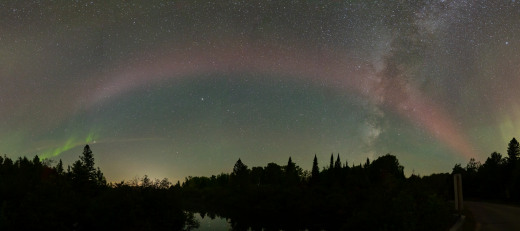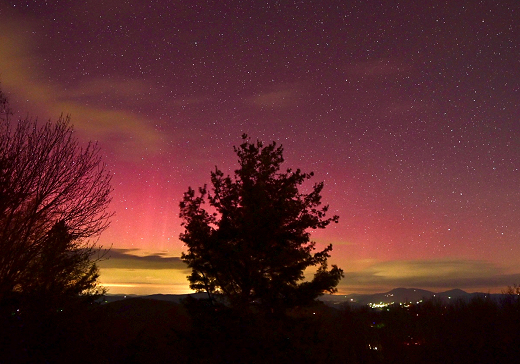
#CME SPARKS STRONG #GEOMAGNETIC #STORM: Earth's magnetic field is still reverberating from a fast-moving CME strike on Sept. 18th. The CME's arrival (a day earlier than expected) sparked a strong G3-class geomagnetic storm with auroras stretching from France to the West Coast of the USA.
Jeroen Daniels photographed the display from Edmonton, Alberta:
"As soon as the sun set I could see auroras dancing in the twilight sky," says Daniels. "The colours were unlike any that I have seen before--greens mixed with blues mixed with reds, orange, pink. It was amazing!"
At the apex of the storm, red atomic-oxygen auroras spread into the United States as far south as Colorado (+40.4N), Missouri (+40.1N), and Nebraska (+41.9N). It was a true mid-latitude event.
Not all the lights in the sky were auroras. Many observers also spotted STEVE--a glowing ribbon of purple light caused by currents of hot plasma flowing through Earth's magnetosphere. Michele Sadauskas photographed the phenomenon from Glidden, Wisconsin:

"When I stepped out of the truck, STEVE appeared vividly across the sky," says Sadauskas. "I quickly set up my pano rig and was pretty happy with the capture. This is the first time I've caught STEVE crossing all the way from east to west!"
Other notable sightings of STEVE were made in Montana, Michigan, Nebraska, South Dakota and Wyoming.
https://spaceweather.com/












